You’re walking through the city streets when you feel a subtle splat on your shoulder. You look down to see a brownish-green glob on your jacket. Pigeon poo. Look up, and you’ll find a row of quietly cooing birds perched on the window ledge. One of them eyes you, inquisitive.
City dwellers everywhere have experienced some version of this unpleasant encounter. Whether you’re strolling through Central Park, or a historic city square in Prague, or along the shore of Sydney Harbor — if there’s a city, there are pigeons.
These birds are so ubiquitous that we humans don’t pay them much heed. (Except, of course, when they ruin our shirt.) But have you ever stopped to wonder where the humble pigeon came from? And why are they found in cities across the globe?
What Exactly Is a Pigeon, Anyway?
These are simple questions, but the answers are more complicated than you might think.
The original pigeon, if you will, is a species known as the rock dove, Columba livia. Like other doves and pigeons species, the rock dove is part of the Columbidae family. Its closest relative is the similar-looking hill pigeon, Columba rupestris.
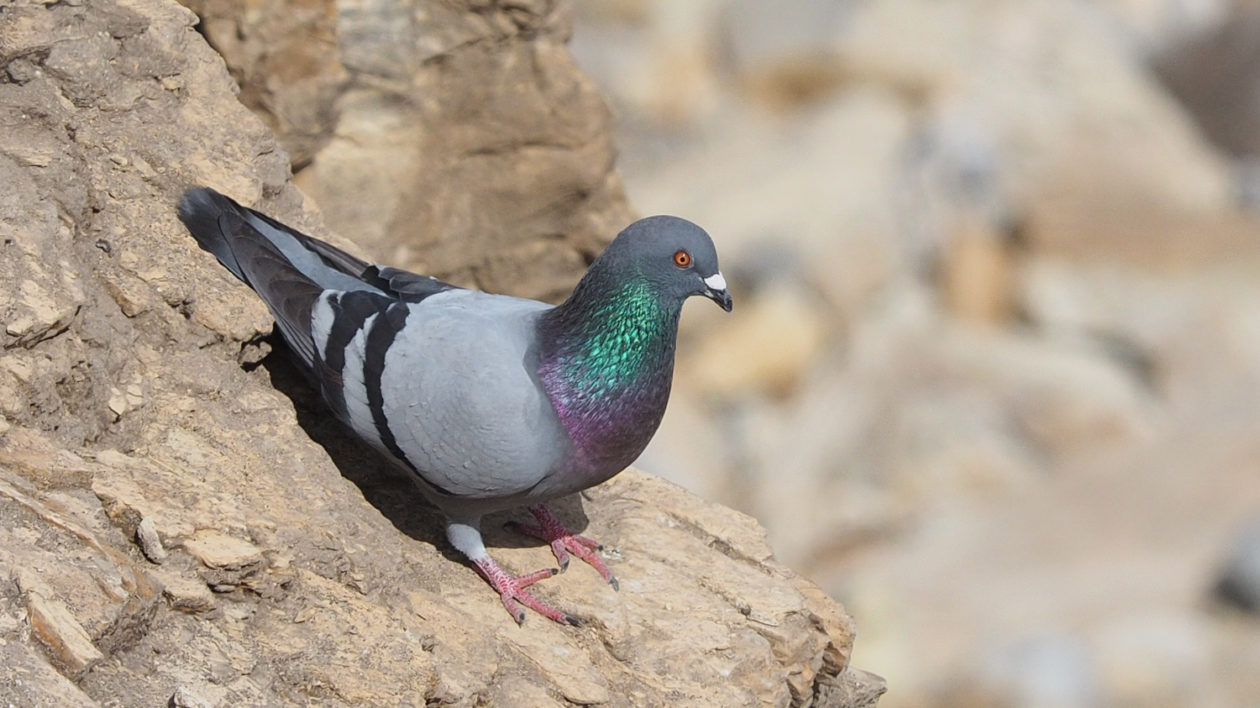
The rock dove is the wild ancestor of the domestic pigeon, Columba livia domestica. Humans have kept and selectively domestic pigeons for thousands of years, resulting in more than 1,000 different breeds. Some varieties have such bizarre plumage that they look about as similar to their wild ancestor as a poodle does to a wolf.
The birds you see pecking, strutting, cooing, and pooing across the world’s cities are feral pigeons. These birds, which form the bulk of the world’s pigeon population, are a hybrid of the original rock dove and domestic pigeons.
Over the centuries, escapee domestic birds added their eclectic genes back into the wild population, which is why feral pigeons come in a wide variety of colors. In one flock you can find birds that are snowy white, dark black, orange-brown, or a combination of any of these colors.
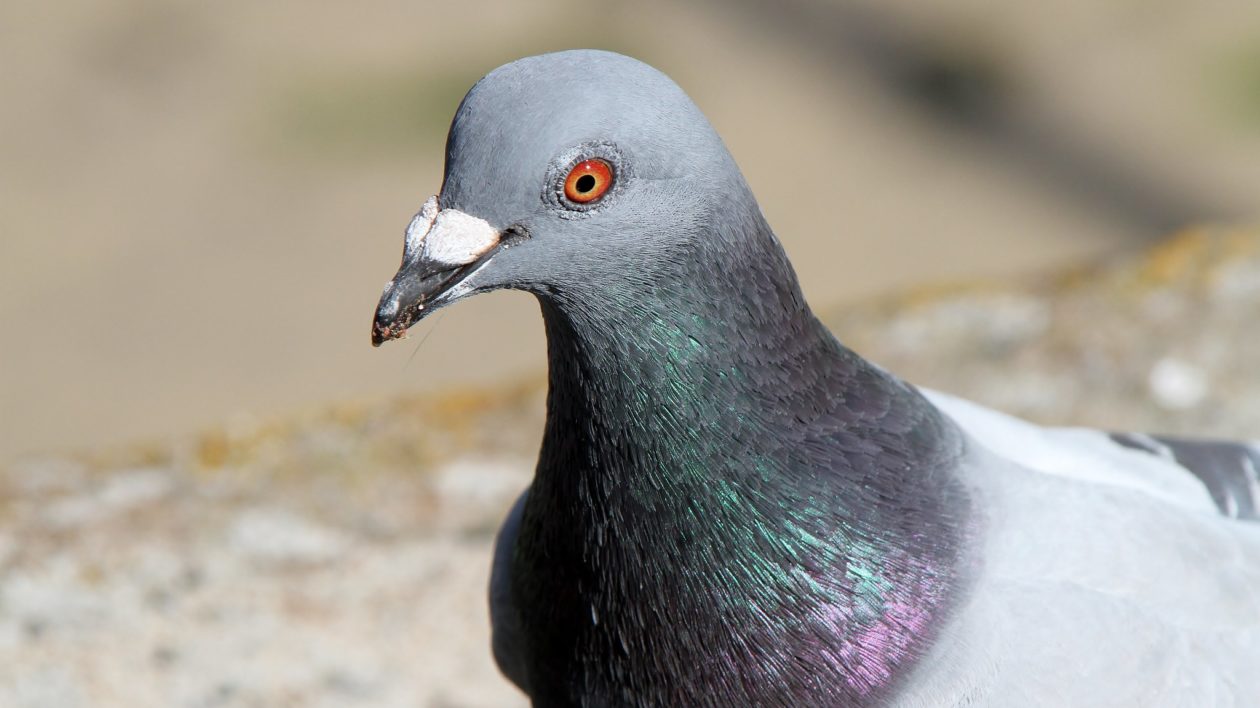
Wild rock doves have a distinctive and consistent plumage pattern. They have pale grey bodies, two dark bands across the wings, and iridescent green and purple feathers along their neck and breast. They have orange eyes, pink feet, and white ceres at the top of their bill. Males and females look very similar, except females have less iridescence on their neck and breast.
There are between 260 and 400 million pigeons worldwide, and the vast majority of them are feral or domestic birds. Wild rock dove populations are threatened by inbreeding with feral birds, and some ornithologists think that there are few, if any, true rock dove populations left.
Many feral pigeons have the same plumage pattern as wild rock doves, so hybridization isn’t something you can tell by sight alone. Only DNA analysis can conclusively determine how much hybridization has occurred in a population, and many populations remain under-studied.
The purest rock dove populations likely exist on offshore islands in Europe and the Mediterranean, where geographic barriers reduce hybridization. For example, recent DNA analysis by UK scientists found that rock doves on the Outer Hebrides, offshore from Scotland, showed very little hybridization with feral pigeons.
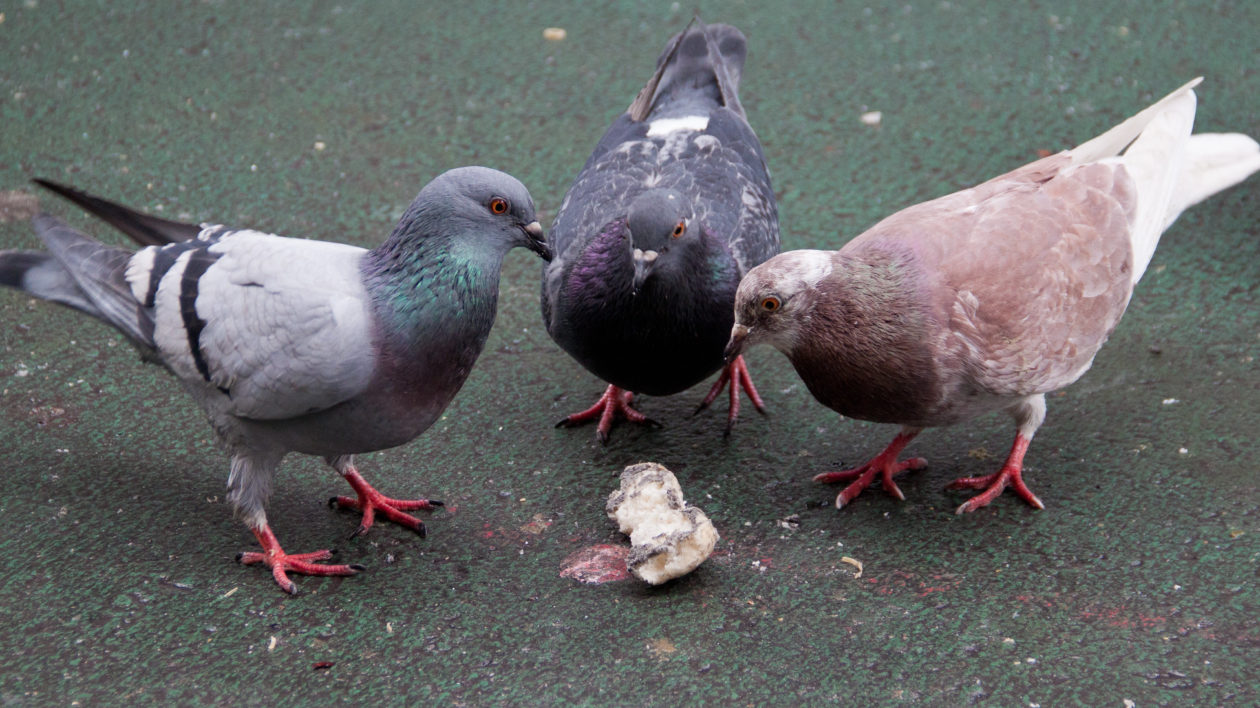
Where Did They Come From?
Today, “wild type” rock doves are found across southern Europe, north Africa, the Middle East, and western and central Asia. While their urban counterparts nest on skyscrapers, wild rock doves nest on cliff faces and in caves.
Archeological evidence indicates that both Neanderthals and later Homo sapiens consumed rock doves for food. Mentions of pigeon husbandry on artifacts from Mesopotamia and in Egyptian hieroglyphics indicate we humans domesticated the species — for use as a food source — by at least 4,500 BC.
Eventually, people realized that they could take advantage of the birds’ navigational skills, too. Pigeons that are captured, moved, and released will fly back to their coops, even if they’re hundreds of miles away from home. Called a “homing instinct,” this behavior has allowed humans to use pigeons to orient sailors towards land and to deliver messages over great distances. The use of messenger pigeons continued even until the modern era, where the birds were used in WWI and WWII to send messages from the front lines and even save stranded troops.
Eventually, chickens became the avian meat of choice in much of the world, and breeding domestic pigeons transitioned from food production to a hobby activity. Pigeon enthusiasts created hundreds of different breeds, with fanciful names — the Arabian Trumpeter, Fairy Swallow, Danish Jacobin — with plumage and colors to match.
Charles Darwin, studied and bred domestic pigeons for years, and — although the Galapagos finches hog all the credit — the intricacies of pigeon breeding helped inform Darwin’s ideas on evolution.

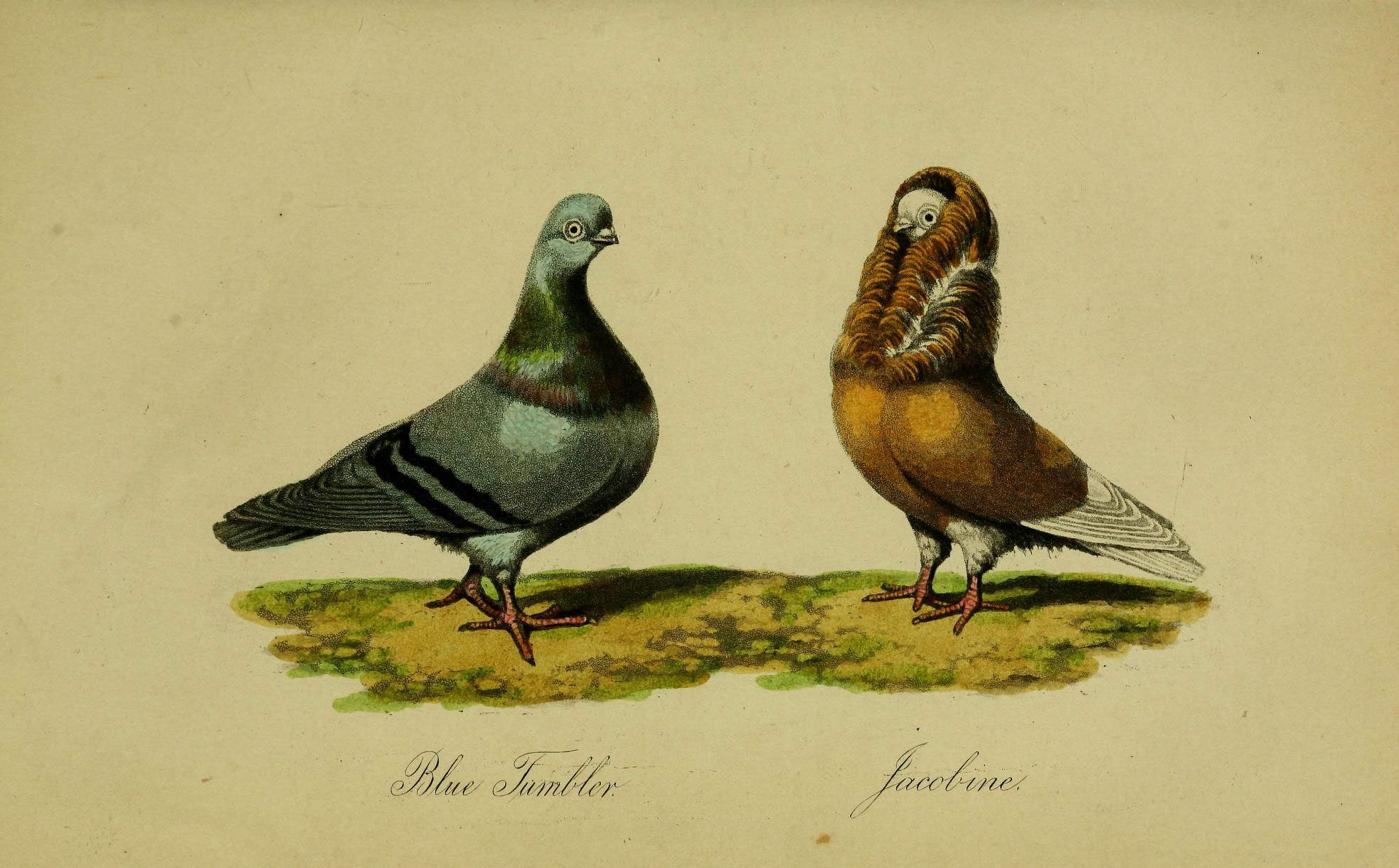
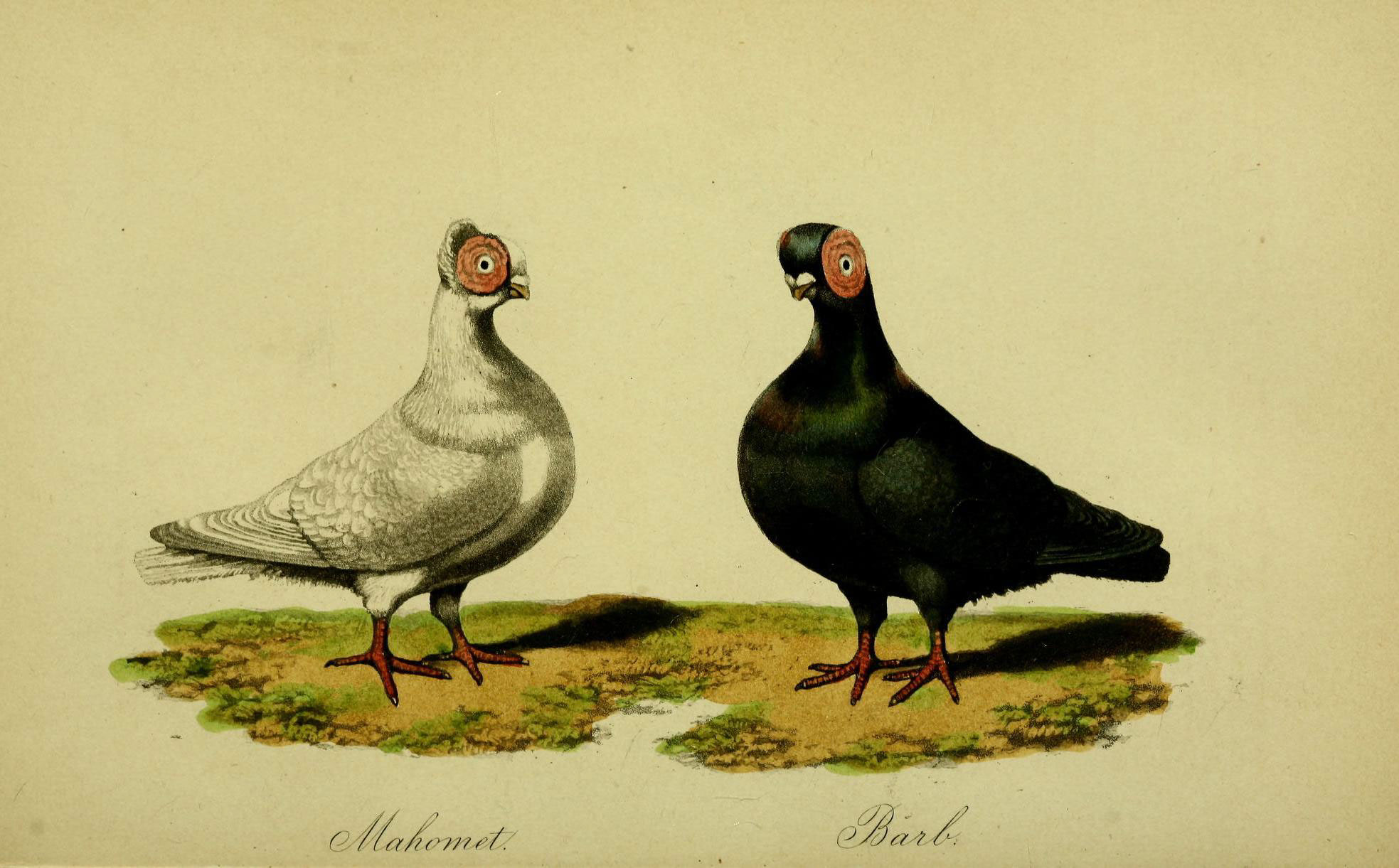
Why Are Pigeons Everywhere?
Today, feral pigeons are found on every continent except Antarctica. They’re one of a handful of species to hold that distinction, along with birds like the house sparrow, cattle egret, peregrine falcon, osprey, common starling, and barn owl.
European colonists brought domestic pigeons to the Americas sometime between 1600 and 1610, after which escappee birds established feral populations. A similar situation occurred in Australia, where European settlers imported domestic pigeons in the 1870s.
Unlike their wild counterparts, feral pigeons have a commensal relationship with people. They prefer to live alongside us, in our cities or agricultural areas, benefitting from the urban habitat we create and the food sources we provide. Feral pigeons are unlikely to wander far from human settlement, even when there is ample room to roam.
And there’s the irony: We humans hold pigeons in little esteem, calling them “rats with wings,” erecting spikes to keep them from nesting on our buildings, and bemoaning the occasional accidental adornment with pigeon poo. But we have no one to blame but ourselves. Why are pigeons everywhere? Because of us.




The article reminds us how, spiked wires are placed on the ledges of buildings, to prevent pigeons from resting & pooping there. This is a pointless endeavour, as the birds just fluff up their feathers & sit on top of the spikes.
I love pigeons however why would you say they are here “because of us”when you stated they are here because of European settlers?
Fairly well researched; but somehow you missed the official vernacular name change of a few years ago (here in the States) from Rock Dove to Rock Pigeon (but they’re still Columbidae). Have you ever seen a pigeon on a farm, or elsewhere outside of a dirty city? They’re clean, healthy, lovely birds regardless of color pattern: they’re only “street rats” when they are drawn to our cities for the waste that our species disposes of indiscriminately and in profusion. If you watch them for awhile you’ll be amazed at their behaviors, especially their dawn and sunset flights as they gather, swirl, and disperse over the buildings and treetops. Great birds.
Instead of hating them so much, why not keep them healthy ny spreading bird seed instead of unhealthy human food and waste and throw up. I started buying bird seed when I got plopped on by a sick bird. I did not get sick, but I realized how much garbage the pigeons were eating. By doing this, I watched them and saw with amazement how they live and how they have certain territories and a leader that watched over his community. I used to wonder how they would take off in flight in a split second. They followed a leader that led them away from danger, like dogs.
Hey, Justine! Thank you for your piece, I really appreciated it.
It reminded me of a story I thought of sharing. A friend of mine that breeds chickens was having a terrible problem, his chickens would get sick and die quickly, sometimes, out of nowhere (he is a small farmer).
One day, he noticed that many feral pigeons would come to have some of the chickens food and nest close to them. As he grew suspicious, he decided to build a physical barrier to keep the pigeons away from his chickens and when he did so, they stopped having recurrent diseases.
It’s a complex situation the one of pigeons. We’ve placed them in this polluted diseased realm. Now they are vectors and, obviously, also greatly suffer from these problems. In the book “Darwin Comes to Town”, there’s a great story about how pigeons store heavy substances in their feathers as a way of surviving.
There’s also a sad curious reality I saw in Brazil, that pigeons around hair saloons only have one foot, because hair gets tangled in their feet and eventually amputes it.